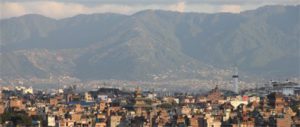This summer, I went on a journey in search of the “real” Shangri-La, trekking up mountains and crossing rivers to find the spot most worthy of the name given to the mythical Tibetan paradise. Finally, I made it – only to discover that paradise is on its way out.
Starting in Beijing, I flew 2,300 kilometres to Deqen Tibetan Autonomous Prefecture in northern Yunnan, south-west China. The county I touched down in used to be called Zhongdian – but it has been re-branded as Shangri-La county by local government in a bid to attract tourists, like an actor taking on a more fashionable stage name. It was not the Shangri-La I was looking for.
Next, a 10-hour bus journey took me along a dusty mountain road, in the throws of being upgraded, across the dry Jinsha River valley, over a cool pass through the Baima Mountains and, finally, to the county of Deqen. This is the northernmost county in Yunnan: go any further and you’re in Tibet.
But I hadn’t reached my destination – there was still a long way to go. Another drive around the side of a mountain, over the Lancang River and two hours later I arrived under the peak of Khawakarpo.
At 6,740 metres, Khawakarpo – described by American explorer Joseph Rock as “the most glorious peak my eyes were ever privileged to see” – is the highest point in Yunnan. It is the major feature of the Meili Snow Mountains, which lie between the Nu and Lancang valleys and have 13 peaks above 6,000 metres, known as the 13 princes. Twenty years ago, a Sino-Japanese group attempting the ascent of Khawakarpo was wiped out by an avalanche, and these mountains remain among the world’s few unclimbed peaks. In 2005, China National Geographic named the range one of China’s 10 most beautiful, and the Meili Lancang valley one of the country’s most picturesque.
Since British author James Hilton described the fictional Shangri-La in his 1933 novel Lost Horizon, many places across the Himalayas have claimed to be the inspiration. The Shangri-La I’m looking for is a small Tibetan village that has been hidden in the folds of Khawakarpo for hundreds of years – Yubeng. Even today, it’s a struggle to get there: a seven or eight hour walk, or four or five on horseback. Climbing the nine kilometres of precipitous mountain path takes you over Nanzong pass and finally to Yubeng, hidden deep in the mountains.
Yubeng was traditionally known as the village hidden in the rocks. In times long past, says local legend, a stranger would visit villages near the mountains every year, asking for grain. He would never say where he came from, and so curious villagers cut a hole in his sack and followed the trail of grain – all the way to a giant rock in the mountainside. When they shifted the rock, they discovered a village hidden within, surrounded on all sides by mountains. This was Yubeng.
But I’m not following a trail of grain, I’m following a trail of rubbish: plastic bags, food wrappers, instant-noodle pots, fodder containers, beer cans – all strewn along the winding path to Yubeng, the Shangri-La of legend.
At the highest point on Nanzong pass, there are several stalls run by Yubeng residents. Behind one of these, I caught a glimpse of something white through the dense trees and went to have a look. What I saw made me gasp: if the rubbish scattered by the road was a guerrilla army, here were massed regiments – plastic rubbish heaped among the trees: a ghastly sight.
Since Yubeng was “discovered” by outsiders more than a decade ago, this isolated village has become a tourist hotspot. But crowds of visitors have brought with them mountains of rubbish. With no road, all goods and refuse have to be moved by horses and porters, and dealing with waste has become a major problem.
Yubeng lies in the Meili Snow Mountains National Park. Until two years ago, the area was managed by the park’s management bureau, which had a system in place – rubbish removal was the responsibility of villagers, who had their names written on bins placed every 50 metres along the road. The villagers were responsible for clearing their area, and then the rubbish would be taken down the mountain on horseback. The park managers had close links with the village and encouraged residents to take care of things themselves. The system worked well, and didn’t cost much.
But in October 2009, the local government ruled that this “national park” would be run by a state-owned tourism company, leaving the park office with neither the funding to operate nor the rights to run as a business. A report from the provincial government’s research office said the national park management office “has seen management functions weakened, is in the awkward position of having nothing to do and is in the process of losing its management functions.”
After the company took over, it spent tens of thousands of yuan employing Yubeng locals to handle the rubbish. But the company wasn’t part of the community in the way the park managers had been and had little contact with the village – and so the villagers took the money and didn’t much bother with the rubbish. If you’re keeping all the entrance ticket money, the villagers thought, you can deal with the rubbish.
It was approaching evening when we arrived at the almost-mythical Yubeng. Before the 1990s, this was a very poor village, but the arrival of tourism has made it one of the richest in the mountains, as locals have earned money from offering horse-rides and opening guesthouses.
I finally realised why people call this the real Shangri-La. Each and every Yubeng doorstep has a view to envy: towering, snow-covered peaks glittering under a pure blue sky. A stroll through never-ending virgin forests takes you to sacred waterfalls, icy lakes, alpine pastures and majestic valleys. Most importantly for the Tibetans, they live in the embrace of the sacred mountain Khawakarpo, near the cave where Guru Rinpoche – believed to have brought Buddhism to Tibet in the eighth century – is said to have meditated. There are 35 households here, with a population of 160, and traditional Tibetan culture has mostly been retained. Almost one third of families are polyandrous (the women have more than one husband).
The village is now full of guesthouses, and several more are being built. One night I stayed at Sacred Waterfall Inn, owned by a man named Aqinbu and his brother. The place is quite big, with more than 20 rooms. A bridge over a small river out front takes you to a wide pasture with forest in the distance. Further off is the beautiful Goddess Peak, but it is so clear it could be right next to the inn.
Passing the house next door I saw the family had just killed a calf. I asked Aqinbu how the locals could kill an animal within sight of the sacred mountains. He fell silent, before explaining: “That’s an outsider; he’ll sell the cow on to one of the innkeepers from Kunming [the provincial capital]. I’ve never killed a cow. The meat for guests is all brought in from outside.”
Aqinbu said those who move here from outside only come for money – they don’t respect local culture and customs, and they bring in bad practices.
More tourists mean more guesthouses. With no highway, there has been no way to bring in building materials from outside, and so trees have been felled. There’s no electricity and wood is burned for cooking, heating and light. Each inn has a boiler needing 500 kilograms of firewood a day – 20 inns use 10,000 kilograms. And so, over the last two years, lots of trees have been chopped down.
The tourists also generate over 50 kilograms of plastic waste a day. But the villagers don’t want to burn it in front of the sacred mountains, and as it can’t readily be taken away, it just piles up.
Management of tourism is also a major issue. In the October national holiday last year, some 500 tourists arrived every day, each staying at least two days – meaning that at any one time, there were 1,000 visitors in the village. There weren’t enough packhorses, there weren’t enough beds, many people couldn’t even get drinking water. During the 2007 May holiday, tourists were washing in sacred waterfalls, hanging their clothes over prayer flags and shouting in loud voices. Then an avalanche killed one and injured another. “If there were stewards, or warning signs, that wouldn’t have happened,” said Aqinbu.
Aqinbu worries for the future of Yubeng: the villagers used to make frequent pilgrimage circuits around the sacred mountains, but they’re doing that a lot less now, preferring to earn money; they used to treat each other like relatives, like brothers, but now some have learned bad business habits from outsiders, competing and undercutting one another. “Give it another five years and we’ll all be enemies,” He said.
He believes better management of tourism is needed, otherwise “this paradise will become another Lijiang”. Lijiang is an old Naxi town not far away which many say has lost its original charms due to excessive commercialisation. The development of Lijiang has been widely criticised.
In fact, Aqinbu’s fears are already becoming reality. The road from the airport to the county will soon be completed, and the five or six hour journey – longer when roadworks are under way – will be cut to less than three. Then, even more tourists will flood into Yubeng.
Liu Jianqiang is Beijing-based deputy editor of chinadialogue.
Homepage image by Liu Jianqiang





